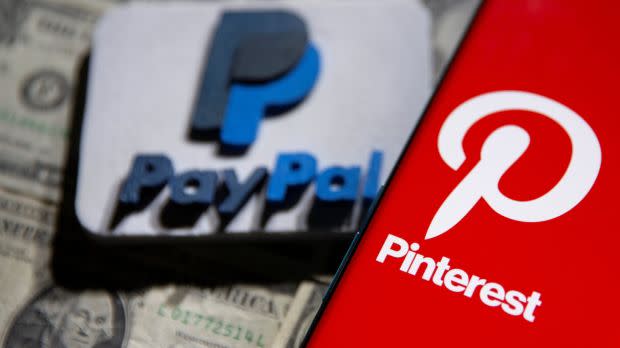Why PayPal wants to buy Pinterest

Scrolling and shopping are largely two different functions online. A new deal could change that in the US. PayPal, the online payments giant, is in talks to acquire Pinterest for $45 billion, which would be the company’s largest-ever acquisition.
It’s a deal that would help Pinterest realize its goal of becoming a shopping powerhouse while PayPal would get one step closer to becoming the “super app” of its aspirations, an analog of China’s WeChat app allowing users to communicate and transact in the same space. Social media firms have succeeded in capturing eyeballs and monetizing them through advertising, but the next question is a bigger one: How do you turn scrollers into shoppers?
Opening the mall of the internet
The deal is still in the works, it could accelerate social media’s push towards a future that’s much more commercial. The successful platforms will integrate shopping seamlessly without disrupting the user’s experience. That’s a model that’s only really succeeded, thus far, in China.
Facebook, Instagram, YouTube, Snapchat, TikTok, and most recently Twitter, all have publicly stated their shopping ambitions. But none have yet found resounding success. Social media companies have long depended on advertising as their primary revenue stream. But they’ve aggressively expanded shoppable content—through both ads and organic posts—by adding features, engaging influencers and advertisers, and partnering with financial firms like Shopify.
“Every social media platform is doubling down right now on native in-app commerce experiences, recognizing they’re a fertile territory in the next era of digital commerce,” said Mike Proulx, vice president and research director for the market research firm Forrester. Facebook and Instagram lead the way in social commerce by total sales, according to a report from Insider Intelligence, but Pinterest is next on the list, expected to sell to 13.9 million of its 454 million users this year. (That’s still only about 3% of its user base.)
In a recent interview, Pinterest chief revenue officer Jon Kaplan said Pinterest imagines itself as a “personalized mall” for its users. He wants users to open the app and encounter personalized ideas that match their style and help them complete projects. While customers often go to Amazon or another marketplace with a product in mind, the company says, Pinterest aspires to be a destination to browse.
The shopping mall comparison has been made for other apps, especially TikTok and Instagram, but Pinterest makes perhaps the most compelling case because of how it’s designed. While networks like Facebook operate through a “social graph,” connecting people with friends and those friends’ friends, and TikTok has built an “interest graph,” serving content to users based on their interests, Pinterest says it uses a “taste graph” that understands users’ style before they have the words to express what it is.
Julie Towns, Pinterest’s global head of ads product marketing, said that’s why users have responded well since the site started rolling out shopping features in the last few years. “Pinners have increased their engagement with our shopping services by more than 20x in the last year,” she said. “And that has a lot to do with the evolving taste graph we’ve been building.”
It’s bigger in China
Pinterest is only the latest target in PayPal’s ambitious growth plan. PayPal has expanded its offerings in recent months to include bill pay, savings accounts, cryptocurrency transactions, and a shopping experience made possible by its 2019 acquisition of Honey, an online coupon company, for $4 billion.
But its goal is to be an all-in-one social commerce platform, a place where people can scroll and shop—among other things—without leaving the app, a model resembling WeChat in China.
Hundreds of billions of dollars are at play. E-commerce facilitated by social media is already wildly popular in China, according to Insider Intelligence. In 2021, Chinese users are expected to spend $351 billion on social commerce. While the sale channel is still nascent in the US, Americans are expected to spend $37 billion.
PayPal and Pinterest haven’t yet inked the deal, but each has a lot of what the other wants. Pinterest wants to expand its e-commerce capabilities and PayPal needs a killer app it can plug into and better understand how people shop online. The future of e-commerce and social media are linked and neither PayPal nor Pinterest wants to get left behind.
Sign up for the Quartz Daily Brief, our free daily newsletter with the world’s most important and interesting news.
More stories from Quartz:
